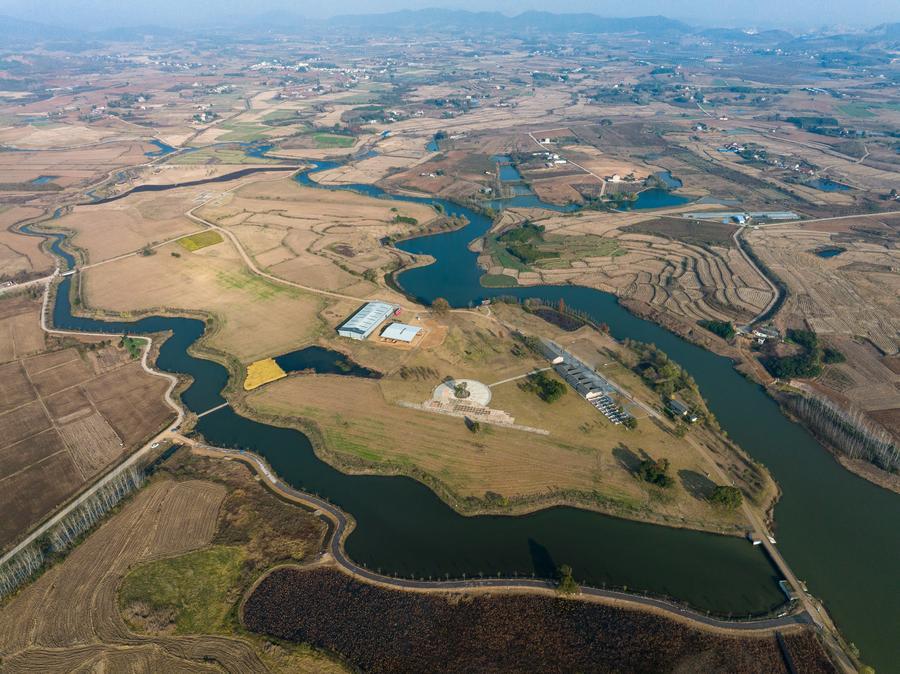Epic Archaeological Finds of 2023
By Staff Reporters

An aerial drone photo shows a view of the Qujialing relics site in Jingmen, central China's Hubei province. (PHOTO: XINHUA)
China recently shared a selection of the most significant archaeological findings in 2023, spanning various regions including Shandong, Fujian, Anhui, Hubei, Henan, and Shaanxi. These discoveries offer intriguing insights into different periods of history, from the ancient Paleolithic era to more recent times.
According to Guan Qiang, deputy head of the National Cultural Heritage Administration, these archaeological revelations serve as vivid testaments to the Chinese nation's enduring legacy and profound civilization.
One noteworthy discovery is the Bashan site complex in Shandong province. Dating back 100,000 years, this site provides evidence of ancient humans utilizing large animal resources, showcasing their adaptive strategies in changing environments.
The Keqiutou Neolithic site complex in Fujian province has revealed the earliest evidence of rice cultivation on southeast coastal islands, shedding light on prehistoric cultural developments and interactions in the region. The discovery of rice remains dating back over 7,000 years provides valuable insights into early agricultural practices and the lifestyle of ancient inhabitants.
Anhui's Mopanshan site is a prominent example of cultural evolution along the Yangtze River, encompassing a vast area and spanning various historical periods to provide a comprehensive understanding of cultural changes over millennia. Notable findings at the site include artifacts from the Majiabang and Liangzhu cultures, showcasing the region's rich cultural heritage.
Meanwhile, the Qujialing site, dating back between 5,900 and 4,200 years, is a significant Neolithic relics site. In recent years, the discovery of farmland irrigation and water conservancy structural ruins at Hubei's Qujialing relics site has shed light on a sophisticated prehistoric water management system, showing advanced technological capabilities and social organization. The unearthed reservoirs, irrigation channels, and flood control measures in this region highlight the ingenuity of ancient civilizations in managing water resources and supporting agricultural development.
In addition, the discovery of the Northwest Continental Slope No 1 and No 2 in the South China Sea is a milestone in deep-sea archaeology. These well-preserved shipwrecks, located at a depth of approximately 1,500 meters, provide valuable insights into ancient maritime trade routes and seafaring technology.
As further research is conducted, these discoveries will continue to reveal the secrets of ancient civilizations and their contributions to human history.







